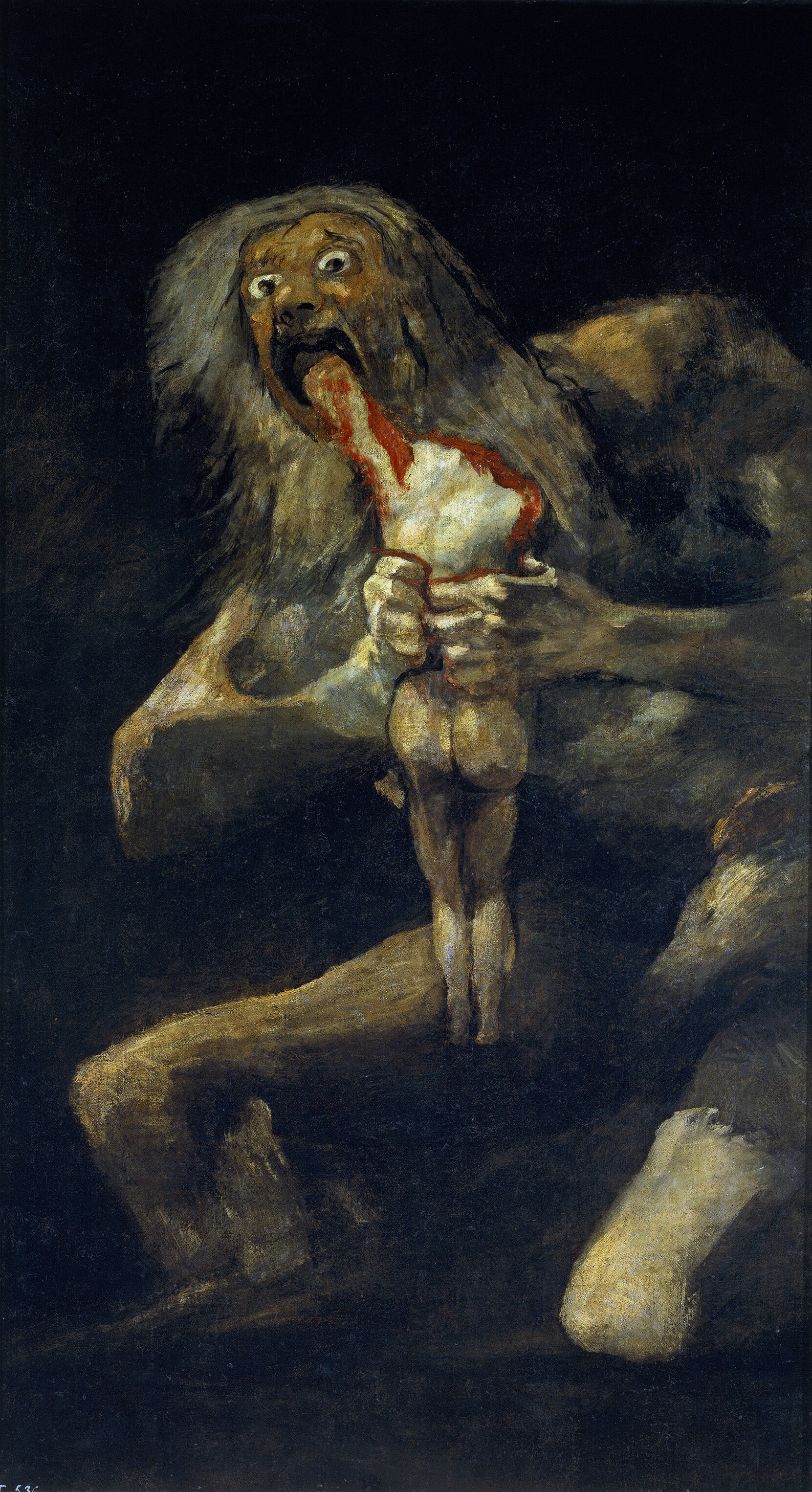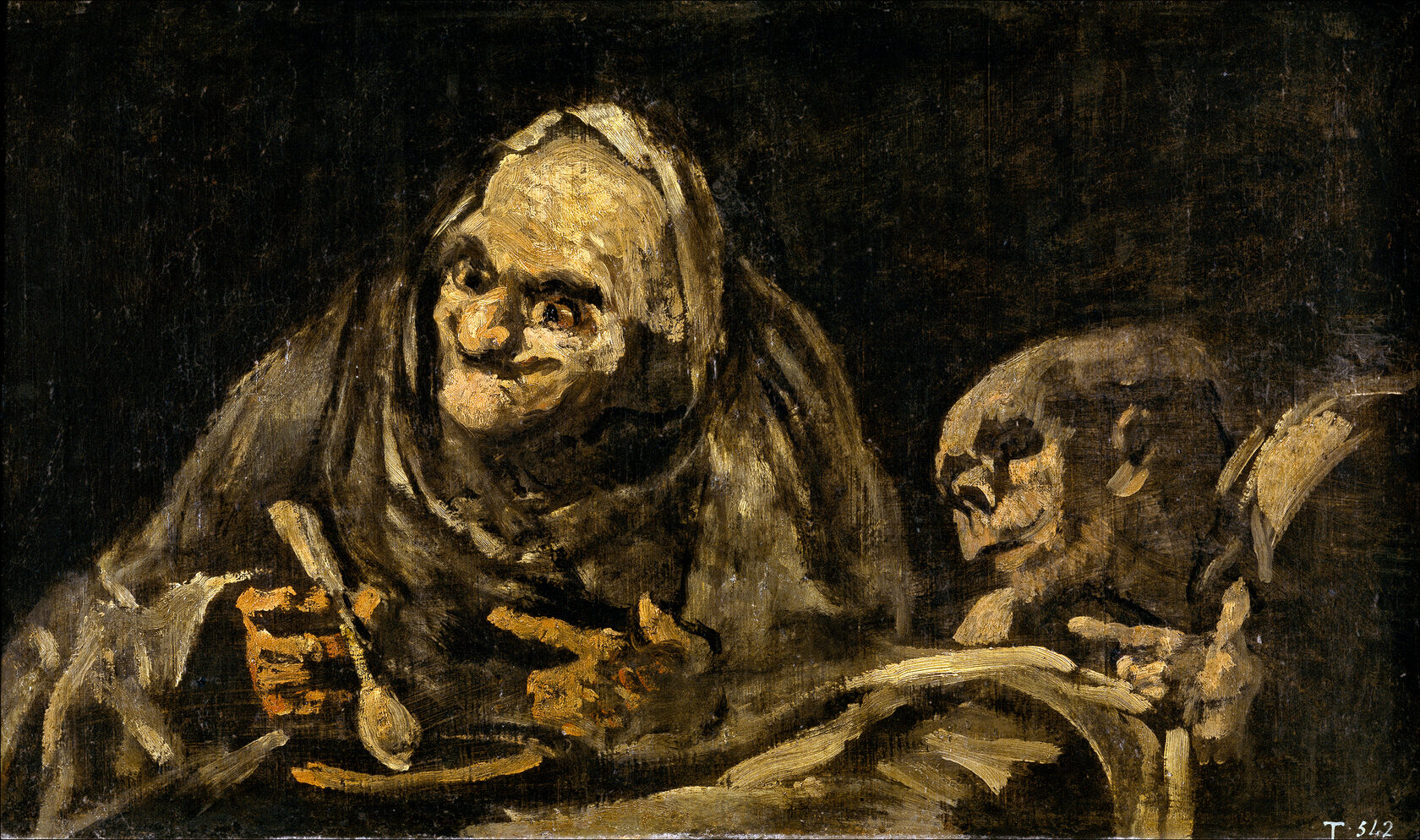Darkly brilliant and casually masterful in turn, Francisco Goya changed art forever. During the days of the Spanish Inquisition, Goya painted royalty, street urchins, and demons. He spent his final years in exile. Though he enjoyed great success as a court painter, Goya withdrew from public life in his later years, no doubt dogged by his increasing deafness and fear of old age and madness. He spent his final years alone in a house outside Madrid, where he covered all the walls with dark paintings of haunting dreams. Here, he created the 14 Black Paintings, scary paintings of nightmares, demons and ordinary people.
As a painter at the Spanish Royal court, Goya had to create beautiful images of people, nature and life in general. And what we love about Goya is that he moved away from this, because Goya was a rebel, a painter who wasn’t afraid to put his dreams and nightmares filled with fantasy figures and scary images on a canvas.
The painter’s dark thoughts didn’t come from thin air. He had witnessed atrocities from the hands of King Ferdinand II, who reinstated the Spanish Inquisition and reigned with terror. Goya had painted scenes of executions of Spaniards by French occupants on horseback. The horrors of the war are also the subject of Goya’s other famous series called The disasters of war. In this video we’ll take a look at 14 hauntingly beautiful paintings that the painter created, one of which is our ultimate favorite painting. Saturn devouring his son is a painting filled with fear and existential angst and is also the subject of module 1 of the course ‘How to boost your creativity with art’.
The Black Paintings
From the late 1810s up to and until his death, Goya lived in seclusion, not engaging in much social life. Until 1824 Goya lived in solitary in a farmhouse nicknamed "La Quinta del Sordo" (The House of the Deaf Man) in the outskirts of Madrid. The house was nicknamed this because coincidence had it that the previous lodger was also deaf. Goya chose this life in solitude because he had become bitter due to the Napoleonic Wars and the Spanish government. He had terror, hysteria and had almost fatal illnesses two times.

It was in this house that he created the 14 Black Paintings, most likely between 1819-1823. The paintings were actually murals because Goya used oil paint on his plaster walls. The paintings were most probably placed in the house like this:
The paintings were discovered after Goya’s death and were hacked off the walls. The process of retrieving the paintings from the walls started in 1874 at the request of Baron Émile d’Erlanger who wanted to exhibit the pieces at the World Fair of 1878 in Paris. The paintings were restored – though critics believe a lot of the images have been greatly altered in the process – put on canvas.
Goya never gave the dark paintings titles, instead the titles we now know and use are chosen by art historians. The first to catalog his paintings was his friend Antonio Brugada. It was Brugada who used his knowledge of Greek Mythology to recognize the mythical creatures and stories in the Black Paintings. Because Goya didn’t give titles, nor did he write about the paintings, it is up for the viewer to interpret the paintings in their own reflection.
Saturn Devouring His Son is arguably the most famous painting of this series. The painting shows Saturn as a scary, large figure who is mid-bite and eating one of his children. Story goes that Saturn was afraid of losing his power as an almighty God to one of his children and thus decided to murder them in a horrific fashion. This painting is also the subject of the first module of the course How to boost your creativity!

Other black paintings focus on Biblical stories, like Judith and Holofernes. This is also a gruesome image, and shows Judith decapitating Holofernes because she wants to protect her people from the cruelty of the general. Many other artists have envisioned this story in their own way, some more gruesome than others. In this version by Goya not much of the actual beheading is seen. It’s definitely more PG 13 than for instance Artimisia Gentileschi’s version!
But not all paintings depict well-known stories. Goya also created paintings about old men, fights, a woman mocking men and even a dog. The paintings might initially not seem to have one common theme, but stylistically they form one coherent image of his state of mind.
Almost all paintings are set in a landscape, showing mountains and trees in the background. This is no coincidence, because further research on the paintings showed that Goya first created landscapes on the walls of his house before adding in the scenes we now know as the Black Paintings.
Heads in a landscape is most probably the fifteenth painting that was separated from the set and is part of the Stanley Moss Collection in New York. The painting has the same kind of landscape that can be found in other paintings and shows a group of people huddling up together. Since other subjects of the Black Paintings show the same grouping of figures this could be the fifteenth Black Painting.

Goya probably never meant to show the paintings outside of his house. He didn’t create them for a commission and he kept visitors at a distance. He did, however, put the paintings in his dining room and sitting rooms, most probably because he saw the paintings as a part of himself by then.
We absolutely love the dark paintings that Goya created, because they give a rare insight into the artist’s mind. We adore the fact he combined both Mythological and Biblical stories, but also shows off his knowledge on landscapes and portraits. He combines famous stories often used in a historical piece with the depiction of common folk - which is an incredibly modern move!
To understand Goya is to understand a troubled mind who was consumed by grief and terror. He did not live a lonely life, but chose seclusion and wanted to surround himself with his own fantasy and haunting ideas. We think that pretty much everyone knows the feeling of wanting to be alone, not getting distracted by people but taking the time to understand oneself.
And we think this is the best lesson to learn from Goya’s story: don’t fight your demons but embrace them and use your creativity to face them!
